Photography and life
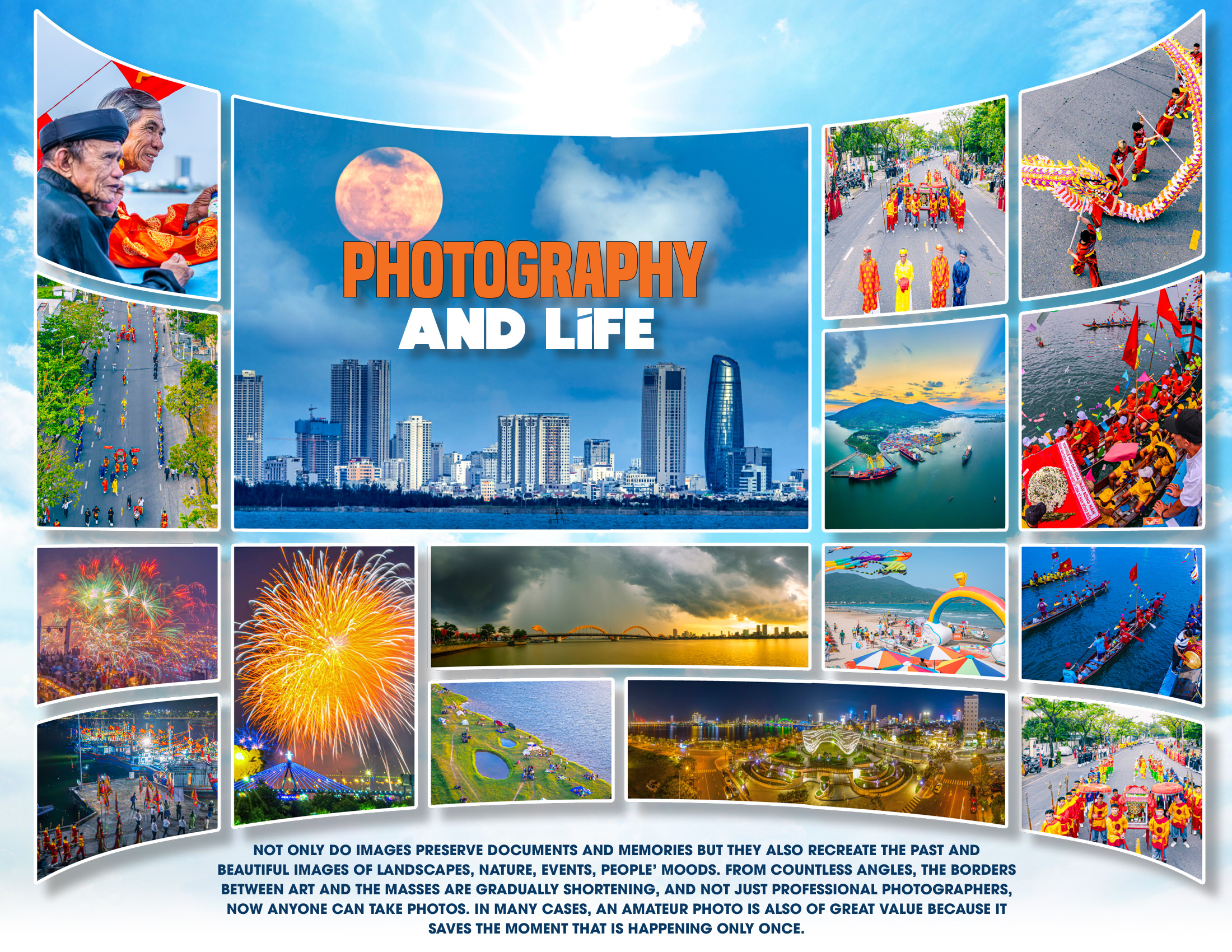 |
 |
 |
Not only do images preserve documents and memories but they also recreate the past and beautiful images of landscapes, nature, events, people’ moods. From countless angles, the borders between art and the masses are gradually shortening, and not just professional photographers, now anyone can take photos. In many cases, an amateur photo is also of great value because it saves the moment that is happening only once.
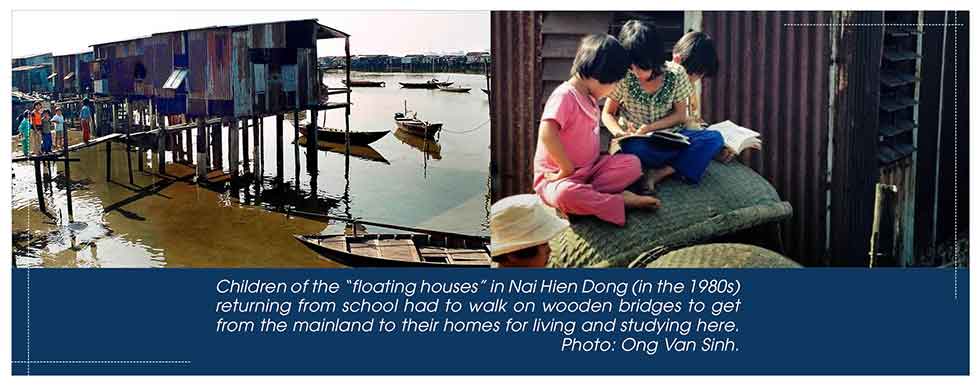 |
Among thousands of photos, the image of women rolling up their pants to their knees, holding traditional conical hats and carrying baskets wading back into their stilt house along the Han River after the early market was photographed and carefully preserved by renowned photographer Ong Van Sinh, the former Chairman of the Da Nang Art Photography Association year after year.
The difference between the eastern and western banks of the iconic Han River was once the source of inspiration for artist Ong Van Sinh to create his artworks. Da Nang people often mention a mark of a time of poverty and destitution at the eastern bank of the river that went through many ups and downs in life.
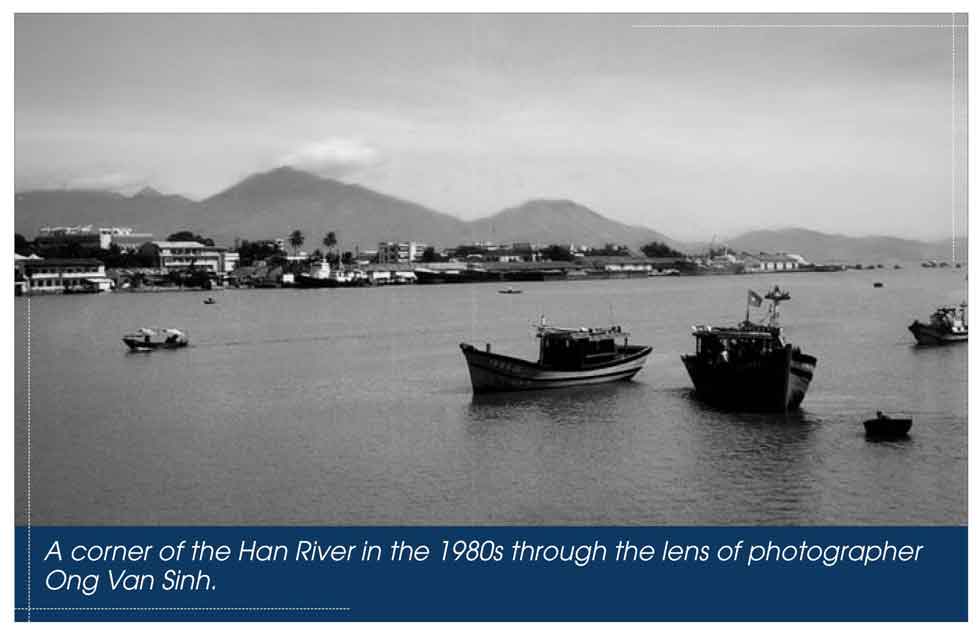 |
He said, as time went by, many temporary stilt houses along the eastern bank of the Han River were demolished. Also, sandy narrow roads, temporary fishing villages along the coasts off My Khe, Man Thai, Tho Quang, the Ba Than ferry terminal and Thong Nhat Street no longer exist as they were replaced by urban spacious streets and residential areas.
Luckily, until now, the seasonal photographer has retained enough photos to be able to admire how a street corner, a river, a beach or a road bears the mark of the past - the present. According to Mr. Bui Van Tieng, the Chairman of the Da Nang Union of Literature and Arts Associations, Ong Van Sinh was able to record many images that do not exist in reality any more - in other words, they could have also been immortalized.
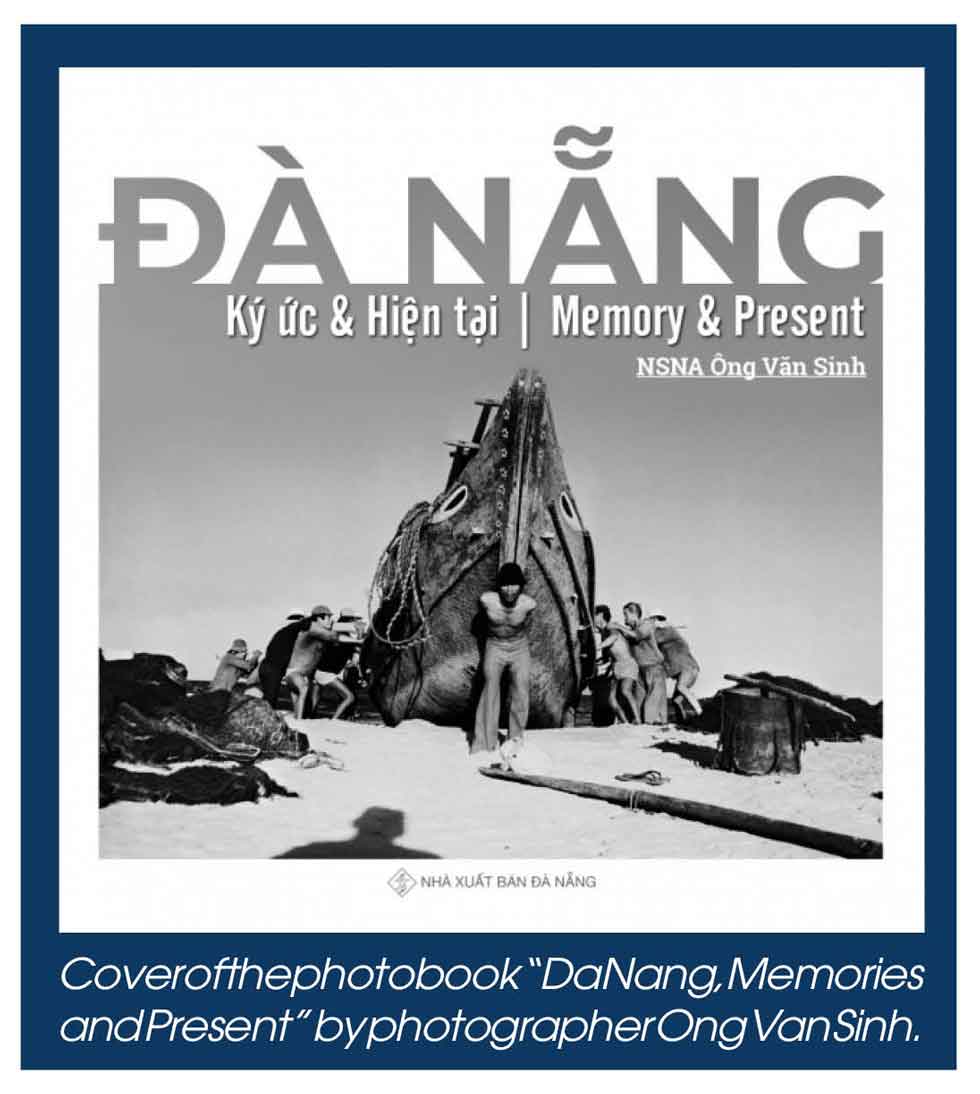 |
Over and over, looking into Da Nang’s past and present images prompted artist Ong Van Sinh to gather 105 photos for a photobook entitled ‘Da Nang, then and now’, in which most of the photos were taken by him more than 40 years ago, using a Yashica, Pentax or Canon cameras. He took photos of temporary stilt houses under the main black and white colour scheme, almost fully describing the lives of fishermen in Nai Hien Dong, An Hai Bac, An Hai wards in the 80s and 90s.
In particular, there was a photo featuring the peaceful life with the image of a man carrying fishing net on the way home and a woman sitting on the side of the boat tying her child’s hair up.
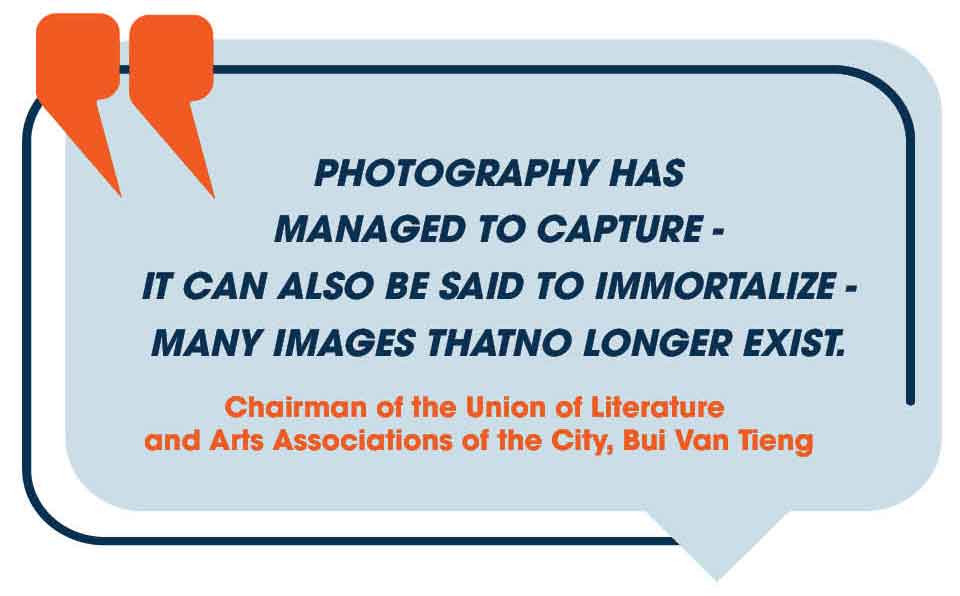 |
In other photos, on ‘cau khi’ (monkey bridge) - a handmade bamboo or wooden passway across a stream or gully monkey bridges - in basket boats or on rocky shores filled with waves, children still innocently play, read books and smile brightly to welcome the future.
Outstandingly, many photos do not appear individually but they are presented in a comparison and contrast method, in the same geographical location, so as to realise the difference between the old and the new. For example, when looking at two photos of the An Hai Dong area then and now respectively, viewers are able realise how Da Nang has developed and changed in a magical way.
 |
 |
Artist Phan Ngoc Hoi, who was born in 1947, made a splash with two editions of the exhibition ‘Rhythm of Time’ (2010 and 2016, respectively)and the namesake photobook highlighting as many as 300 beautiful photos classified into 4 themed groups: History in my heart; Quang Nam - Da Nang, Love and nostalgia; Beloved country; Looking out at the world. Despite his old age, he seems to maintain his strong passion for photography as he is silently preparing photo sources for a personal exhibition scheduled to take place in 2026 when he turns 80.
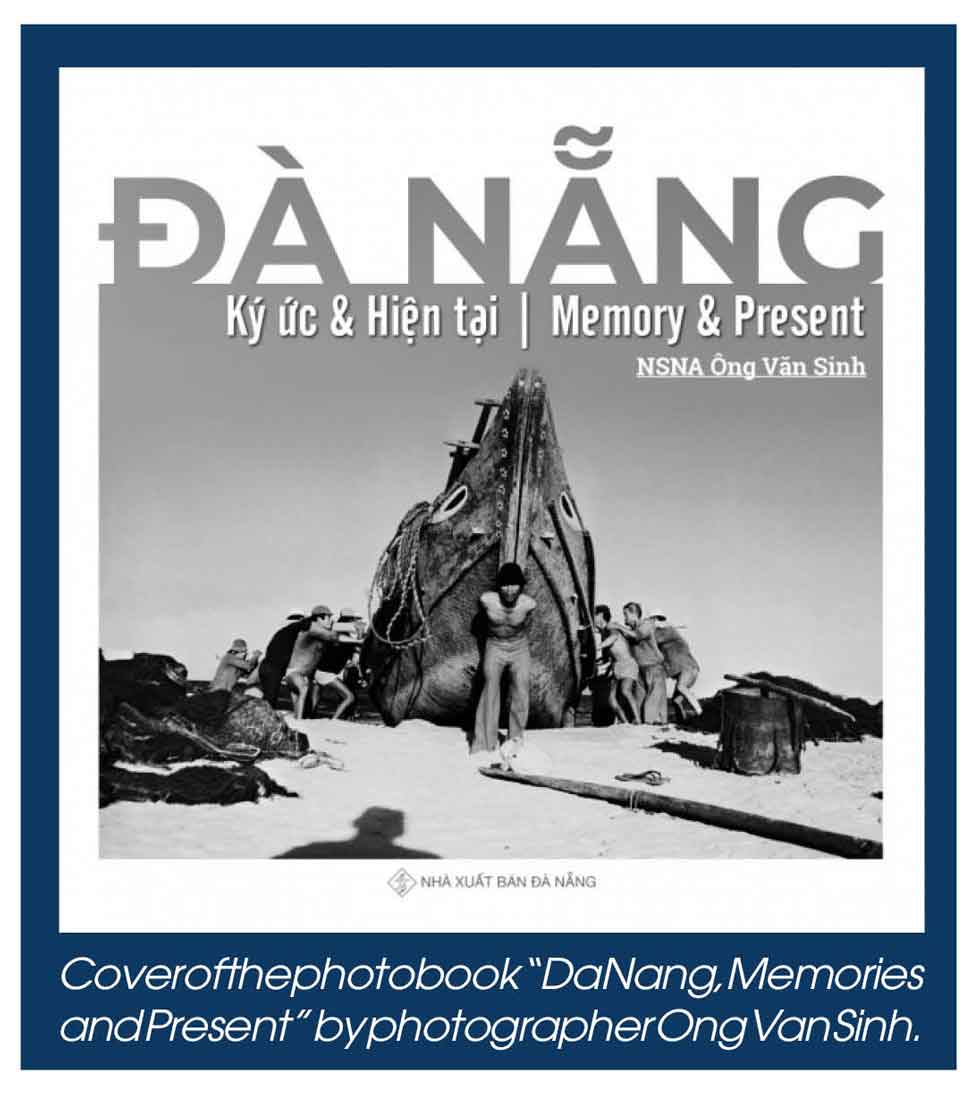 |
Once working as a photojournalist, Phan Ngoc Hoi graped the opportunity to attend many events targeting the community life, so to some extent, he largely contributed to recording historical values in a unique way. Through photo sources containing a lot of valuable information and documents, people can feel the closeness and intimacy of the Party and State leaders through the ages such as former Prime Minister Pham Van Dong and the late General Vo Nguyen Giap, fomer General Secretary Le Kha Phieu, former President Vo Chi Cong, the late General Secretary Do Muoi during their Da Nang trips for work.
Along with that, images of the nature, people, festivals, rivers and uniquely-shaped bridges are also gently and delicately portrayed through the lens of an artist with a romantic soul. Assessing contributions made by Phan Ngoc Hoi, Mr. Vu Quoc Khanh, the Chairman of the Viet Nam Association of Photographic Artists, said that it is indeed a tireless professional journey combined with the artist's creative talent. “In his career as a photographer, Phan Ngoc Hoi achieved many successes, winning many domestic and international awards. Many of his news and political photos have become valuable historical documents for the country and the city in particular.”, Mr. Khanh assessed.
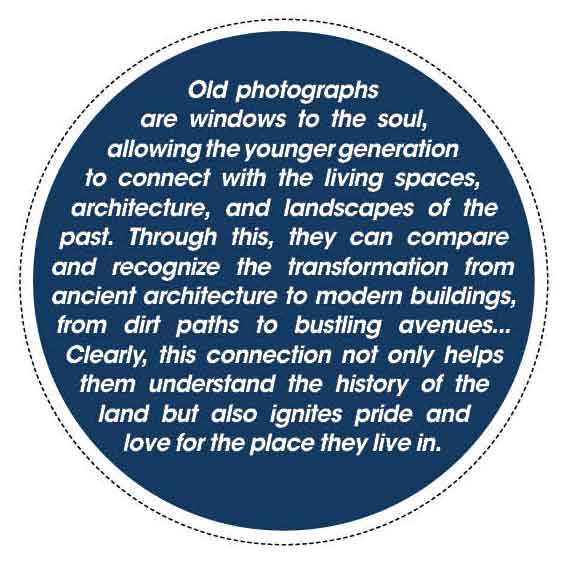 |
For more than 50 years of working as a photographer, Phan Ngoc Hoi has still diligently taken trips to record the beautiful scenery of the land and people of beloved Viet Nam. Travelling a lot means that he capture in his lens a treasure trove of valuable documents about regions and countries that he had the opportunity to visit.
Thanks to his passion for taking photos, he was fortunate to record many images and events related to the development of Da Nang - the beautiful city with the Han River. Among them are about 60 photos about the history of development of Da Nang and neighbouring Quang Nam Province and all of them are regularly displayed at the Museum of Da Nang and the Quang Nam Provincial Museum. That is also the love and heart of the photographic artist heading towards his hometown.
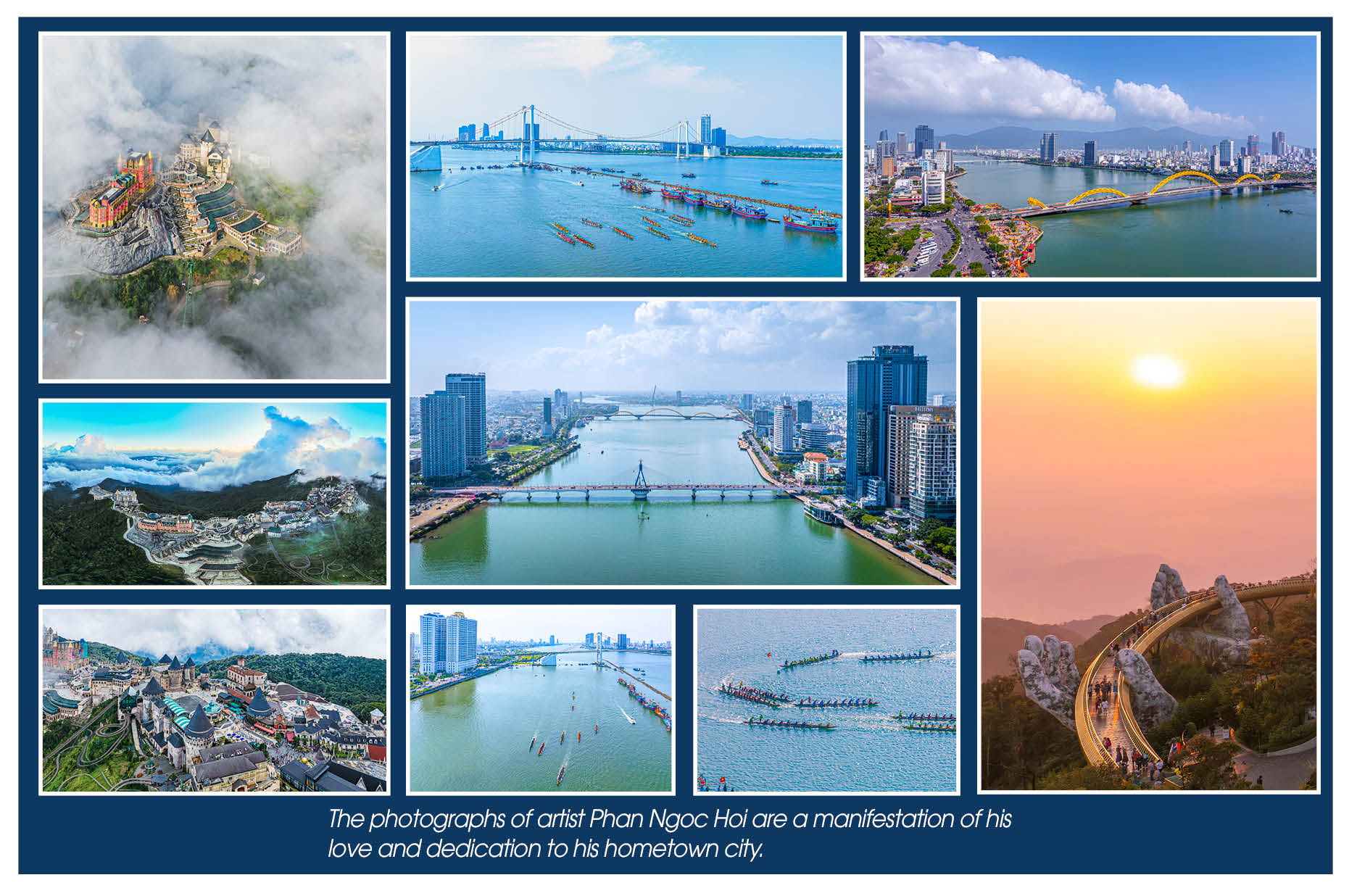 |
 |
The image of nostalgic and youthful Da Nang looms behind each work by Phan Ngoc Hoi, Ong Van Sinh and other photographers. It's still Da Nang but each of the talented artists has provided viewers with additional perspectives, especially panoramic views of the city taken from above, from mountains, from the sea or from high-rise buildings. For culture lovers, photos are even more valuable when recording people's living spaces and festivals. More precious, there are dozens of rolls of film being carefully stored by artists as part of memories in the life of holding the camera.
The photography industry has gradually proven its irreplaceable role in recording and preserving the historical development of lands and cities over the centuries. Not only is photography a tool to preserve moments, but it also opens the wide door to the past, helping the younger generation better understand and feel about life, culture, architecture and important events that took place on the land where they live.
 |
In other words, old photos are windows leading to the soul, helping the younger generation access the living spaces, architecture and landscapes of the past. Thanks to that, they can compare and recognise the transformation from ancient architecture faciltiies to modern buildings, or from narrow roads to busy boulevards. There is no doubt that this approach not only helps they understand more about the history of the land, but also arouse the pride and love for the place where they live.
Besides basic technical knowledge, there are no limitations or constraints when it comes to photos. The photographer take photos with emotions, patience, creativity and passion nurtured throughout the whole journey of holding a camera.
 |
 |
The cited statement is the mindset of photographer Pham Dang Khiem about the journey of holding a camera. He was once observed working on the pitch at the Hoa Xuan Stadium during a fierce match in the V-League National Football Championship or attentively watching a herd of red-shanked douc langurs foraging for food on the Son Tra Peninsula, and at other times, taking photos of the sunset over a river near his home in Dien Ban Town, Quang Nam Province or the beauty of Hoi An ancient town after a storm.
 |
The multi-themed photos he posted on social network or presented in competitions and exhibitions have their own quality with a new perspective. As the Vice Chairman of the Da Nang Photography Club, a member of the Da Nang Art Photography Association, Pham Dang Khiem's photography journey can be considered late compared to many other photographers. Starting in 2017 when he was a construction engineer, he embarked upon photography to capture the images of architectural works and projects.
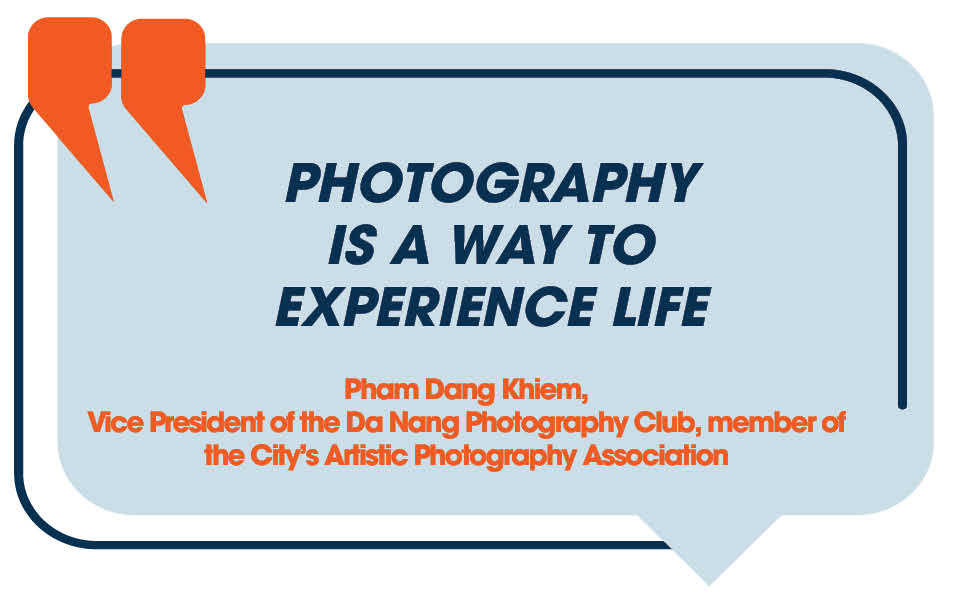 |
Through the process of learning eagerness and strong his passion for photography, he gradually got better at it and started reaping high rewards. These included second prizes in the ASEAN regional photo contest ‘White pollution impacts on marine ecosystems’ and the Artistic Creation Contest of Protecting the Ozone Layer, gold and silver medals, along with many consolation prizes in international photo competitions.
Also a member of the Da Nang Artistic Photography Association of Da Nang city and winner of many awards, Mr. Mai Quang Hien, an officer of the Hai Chau District Culture and Information Department, is a familiar photographer at many political, cultural and tourism events.
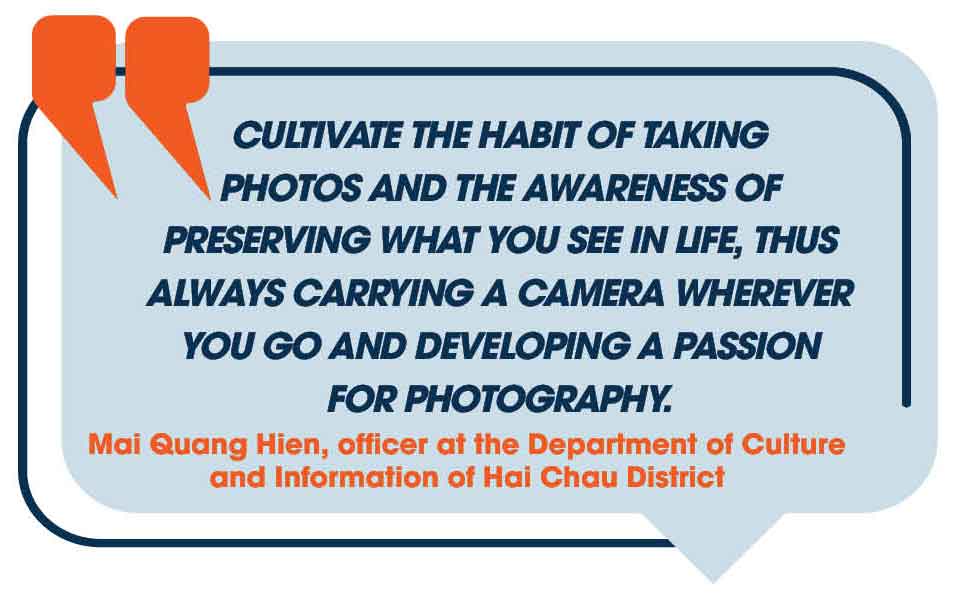 |
Through Mr. Hien's camera angle, the annual Hai Chau village communal house festival, the APEC Sculpture Garden Park and the higly-invitingNam O mossy rapids, the iconic Han River, or the musical water fountain show at March 29 Square were vividly captured with vibrant colours embedded in a simple yet impressive layout.
The naturalness and gentleness in the content and composition of photos from Mr. Hien's perspective is the highly-encouraging result of his journey with photography for nearly ten years. “That period of time fostered in me the habit of taking photos and the awareness of preserving the things I see in life. From then on, I had to carry a camera wherever I went and nurtured a passion for photography," Mr. Hien said.
 |
From passion, emotions and camera angles, the cited photographers wish to promote the beauty of life through the language of photography.
 |
Photography is an art and also a hobby. Besides basic knowledge such as technical specifications, composition, camera operations and lens types, photography has no limits or constraints. In other words, this is the playground of emotions and creativity. People who love photography jokingly call this passion "jumping into the lime hole", implying that once you get into it, it's hard to get out. In that passion, there is a lot of investment in skills, equipment and time. As for equipment, many photographers spend tens, hundreds of millions or even more to have satisfactory equipment. Not only cameras, many people buy flycamm, waterproof cameras, and other supoportive devices.
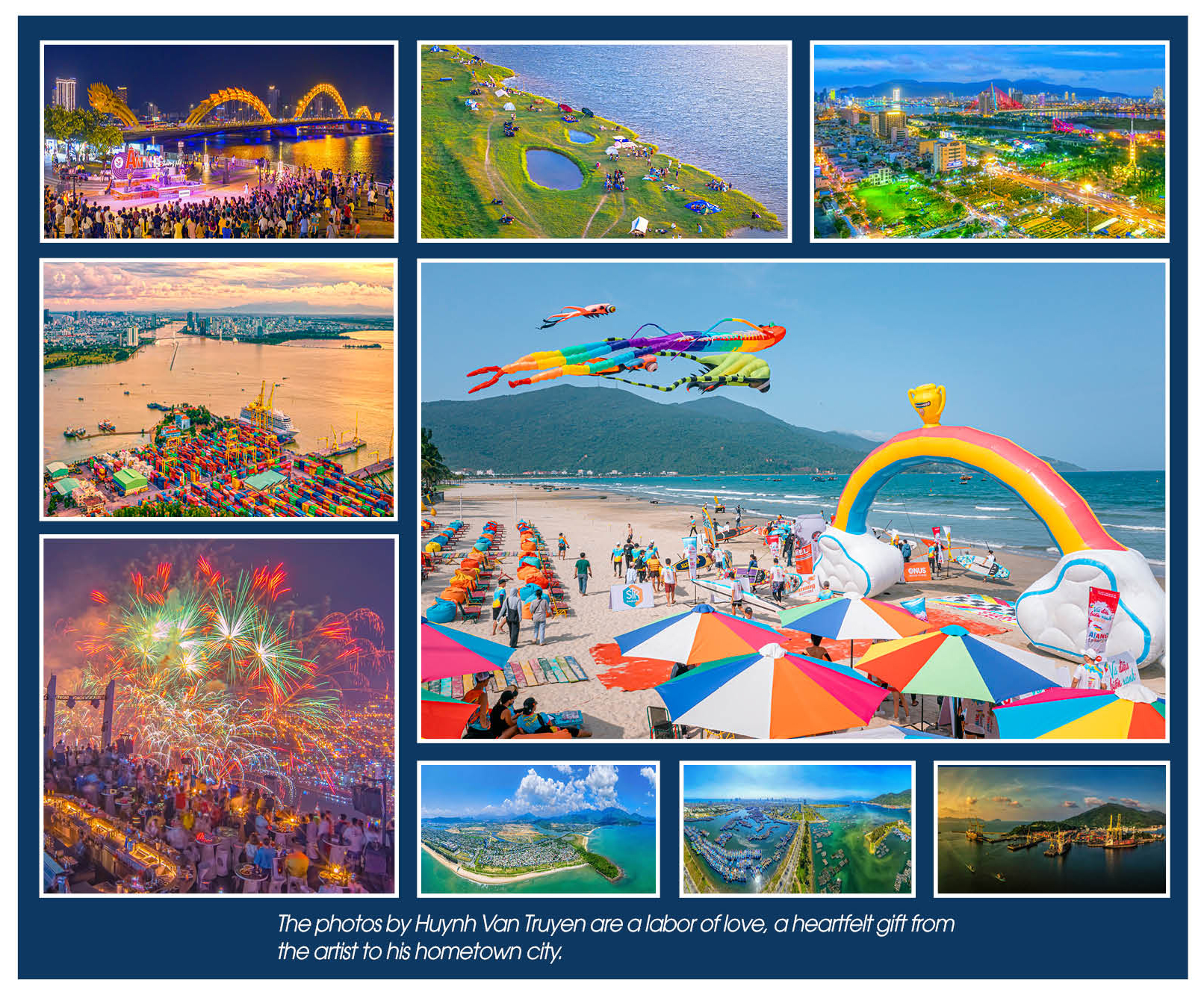 |
"Any investment is really expensive but worth it to have a beautiful photo," Mr. Mai Quang Hien affirmed. He recalls the first years of holding a camera, sometimes coming home with his freshly-taken photos and asking himself: "Why do other people's photos that look good but my photos are so bad? Is it because of the equipment or the skill?". Gradually, through training programmes launched by the Da Nang Photography Association and enthusiastically practicing in real life, Mr. Hien self-learned, absorbed more experience and knowledge, and gradually saved money to upgrade his skills and equipment level.
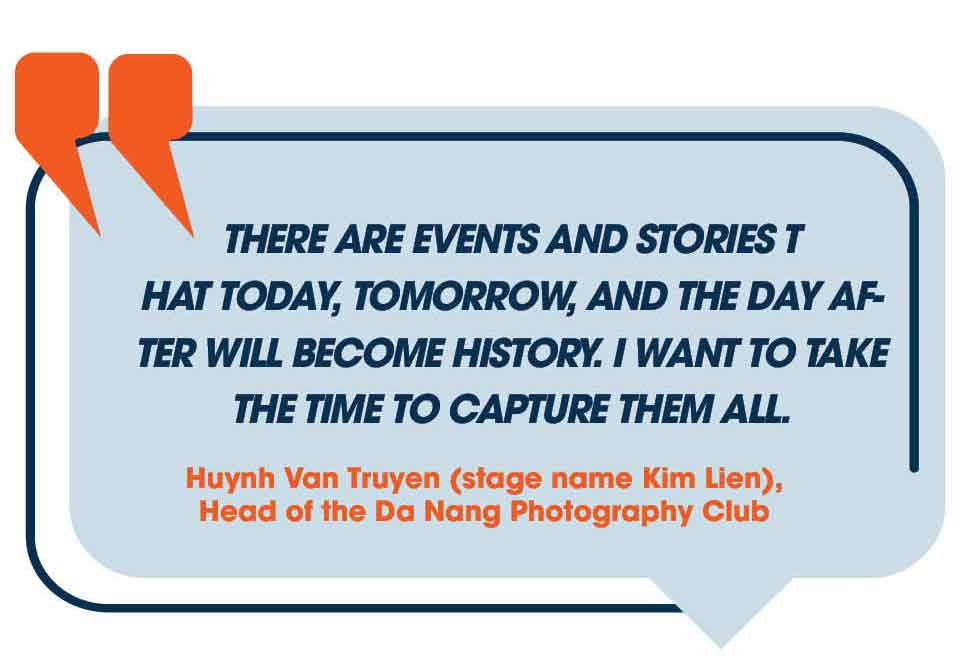 |
Skills and equipment are necessary factors, but the "sufficient" condition for a photo enthusiast is probably time investment. Mr. Huynh Van Truyen, popularly known as Kim Lien, and many photography artists constantly present at many events. They were present to take photos at the Avalokiteśvara Festival in Da Nang, UIM F1H2O World Motorboat Race in Binh Dinh Province, and usually at Hoi An and Ba Na.
Mr. Truyen said: “Da Nang, especially the both banks of the Han River, whether sunny or rainy, still reminds me of a familiar feeling. The pace of life changes every day, today is different from tomorrow, I simply want to have time to take photos, want those images to be preserved in their best forms”.
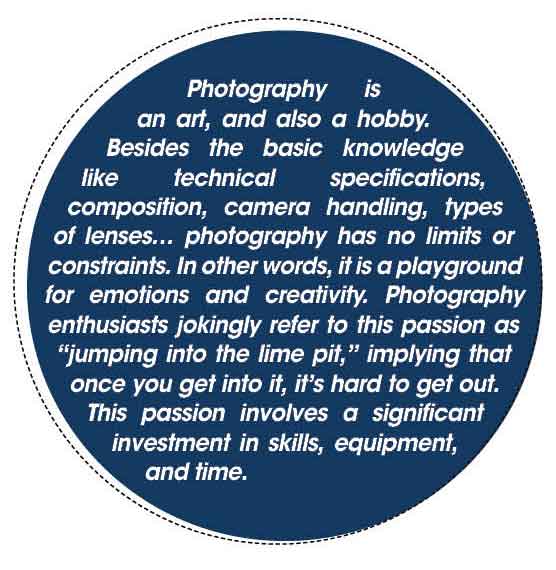 |
Meanwhile, Mr. Pham Dang Khiem, despite the rain and wind, still went up to the Hai Van Pass at night to capture the moment when migrant workers returned to their hometown during the COVID-19 outbreak period or rushed to take photos of testing, vaccination, and disinfection processes during the days when Da Nang, and Viet Nam as a whole, were straining to fight against COVID-19.
Mr. Mai Quang Hien, in his free time, usually travels around to catch the sunset over the Han River and the Da Nang Bay. Mr. Hien said: “Da Nang, especially the banks of the iconic Han River, whether sunny or rainy, still reminds me of a familiar feeling. Life changes every day, today is different from tomorrow, I simply want to have time to take photos, want those images to be preserved in the best possible way”.
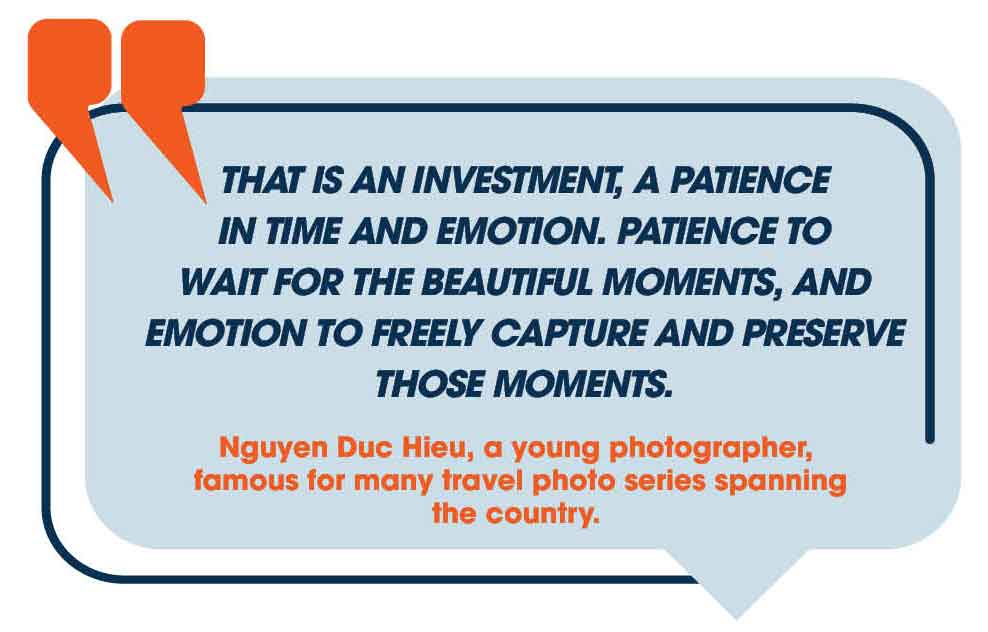 |
It was surprised that a group of photographers camping overnight on the top of Thien Phuc Duc Hill just to hunt clouds and capture the moment of mist and clouds floating in the sky of the mountain town of Da Lat at dawn. Nguyen Duc Hieu, a young photographer, famous for many travel photo series spanning the country, said: "It's an investment and patience in terms of time and emotions. Lets’ be patient to wait for beautiful moments, have emotions to comfortably capture and preserve those valuable moments."
 |
 |
Returning from the Whale Worshiping Festival in Son Tra District, Da Nang, photography artist Nguyen Xuan Tu, a member of the Da Nang Art Photography Association realised that compared to landscape photos, photos of cultural festivals and human activities, were particularly vibrant. Therefore, capturing these moments requires much attention to composition, lighting and angles.
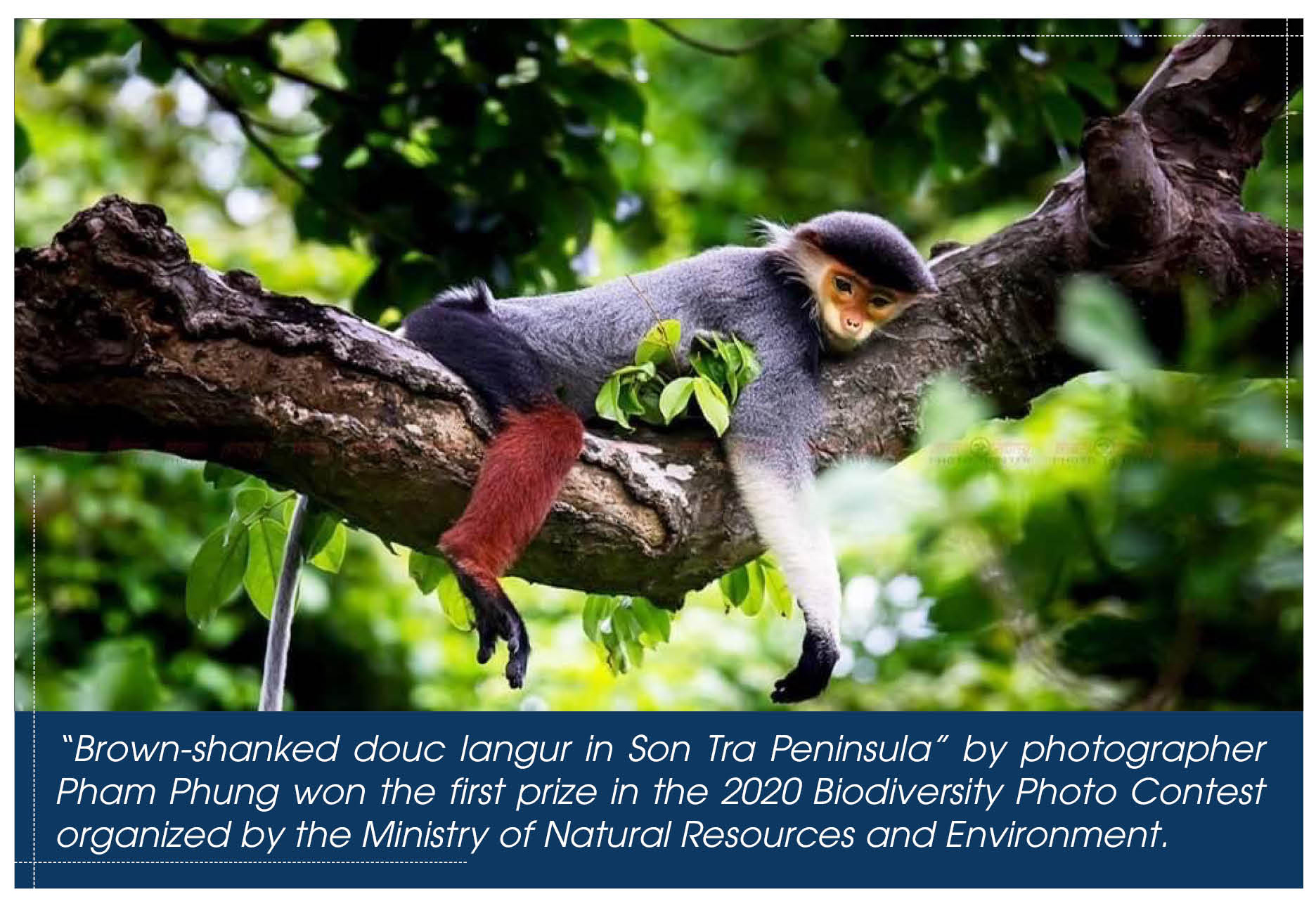 |
Journalists often liken a newspaper photograph to "a picture worth a thousand words." A true journalistic photograph allows readers to understand the entire story. While news photographs excel in conveying information, artistic photographs must evoke emotions. Photographers must have the mindset and perspective to convey the message creatively. Therefore, photographers constantly explore new angles and beautiful, innovative moments to spread goodness and beauty to the community.
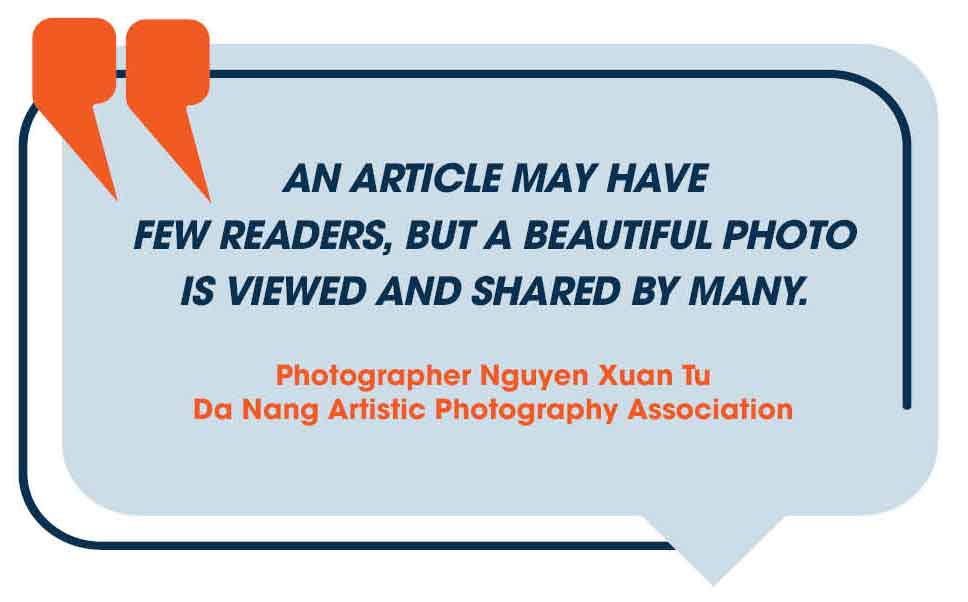 |
From being a journalist specializing in illustrative photography for articles, photography artist Nguyen Xuan Tu shifted to artistic photography. Especially later, he focused on capturing various topics such as tourism, landscapes, beautiful architectural structures and cultural festivals like the Whale Worshiping Festival, and the Da Nang International Fireworks Festival.
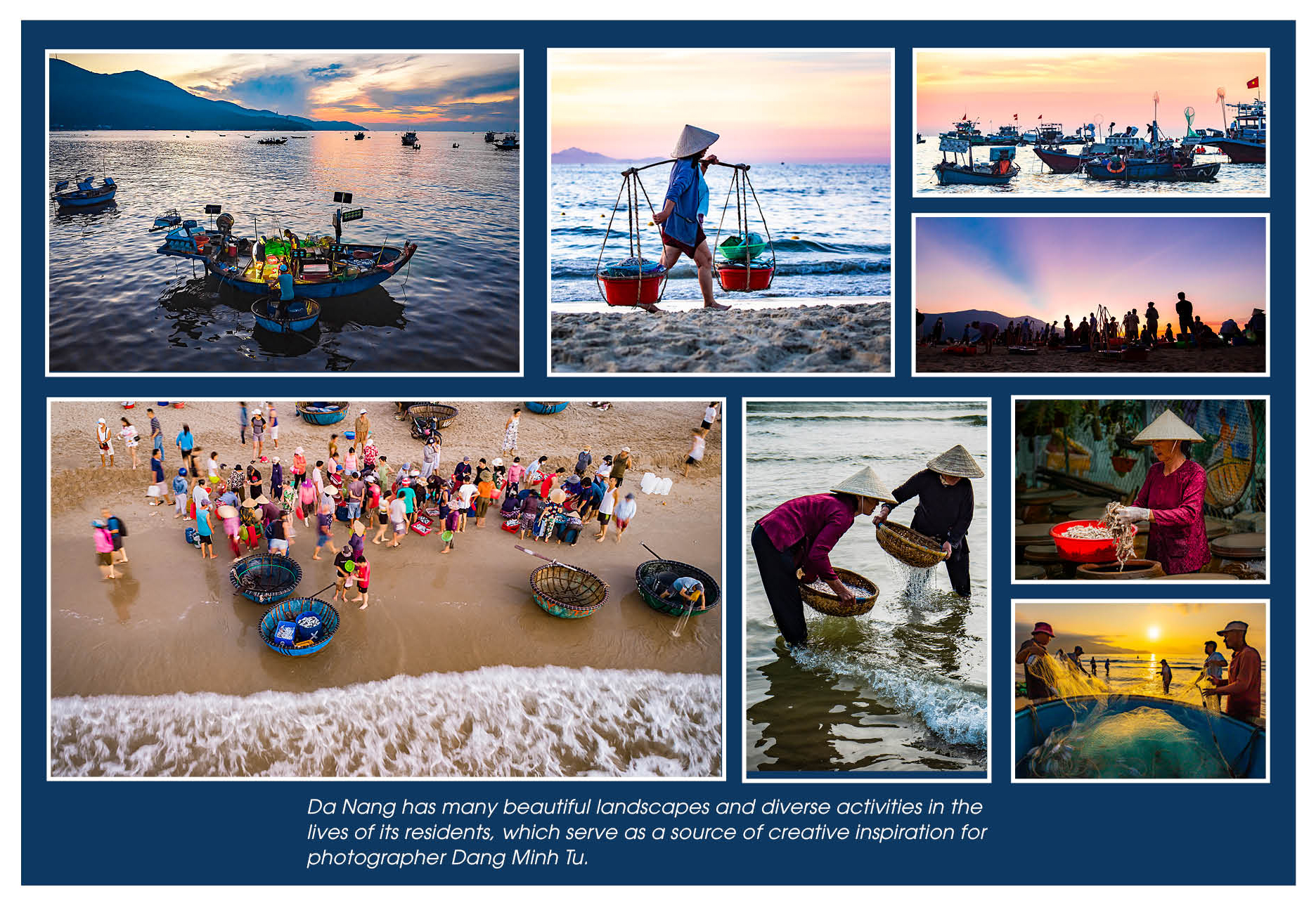 |
 |
Present at the 29th South Central and Central Highlands Art Photography Festival recently held in Da Nang, photography artist Pham Phung from the Da Nang Art Photography Association said that he has a strong passion for capturing landscapes and wildlife. Fortunately, this is also a meangingul playground where advantages have been created for him and other photographers to pursue their passion for photograaphy. One of the most memorable experiences was when he photographed the red-shanked douc langurs on the Son Tra Peninsula. “To capture beautiful moments of the douc langur, I spent the whole day to catch rare moments that no one else could do. In the cluster of photos of the douc langur sent to the 2020 Biological Diversity Photo Contest organised by the Vietnamese Ministry of Natural Resources and the Environment, the judges selected a photo of a red-shanked douc langur resting calmly on a tree trunk for the first prize because it showed off the undisturbed living space of the douc langur.”, photography artist Pham Phung recalled.
 |
Besides, photography artist Pham Hung often goes to the Ba Na to hunt for photos, especially in the spring, because this is the time when cherry blossoms bloom, nature is full of life, and many birds come to suck nectar from flowers. Da Nang possesses many beautiful and diverse scenic spots such as rivers, mountains and the sea for photographic creativity. Therefore, even though he has been involved in artistic photography for over 10 years, he has never felt short of topics. Besides participating in competitions, he also collaborates with some national and local newspapers, especially the Heritage Magazine, to promote the city's beautiful images to readers both at home and abroad.
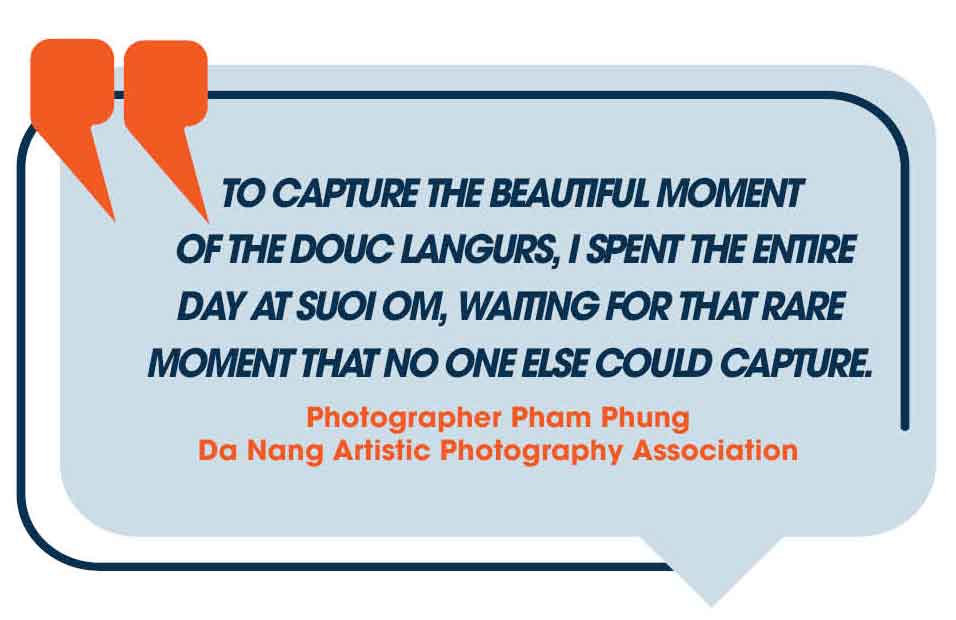 |
Photography artist Le Van from the Quang Nam Provincial Photography Association, who just received the State Prize with the artwork ‘Homecoming’ also believes that Da Nang’s artists have an advantage when living in a liveable city where there are numerous beautiful scenic spots inspiring a flow of creativity. This year, at the South Central and Central Highlands Art Photography Festival, many entries highlighting Da Nang won prizes. Da Nang also took the lead in the number of photos selected for exhibitions and awards with 35 photos taken by 25 artists.
 |
Nowadays, the development of science and technology has facilitated modern photographic equipment for photographers, especially aerial photography using drones. Along with many cultural and sports events, Da Nang is not only beautiful during the day but also at night with spraking lights. This is a source of inspiration for photographers capturing the city's night scenes from above. When beautiful moments of Da Nang are fully captured by photographers, they create emotions for viewers and leave beautiful impressions.
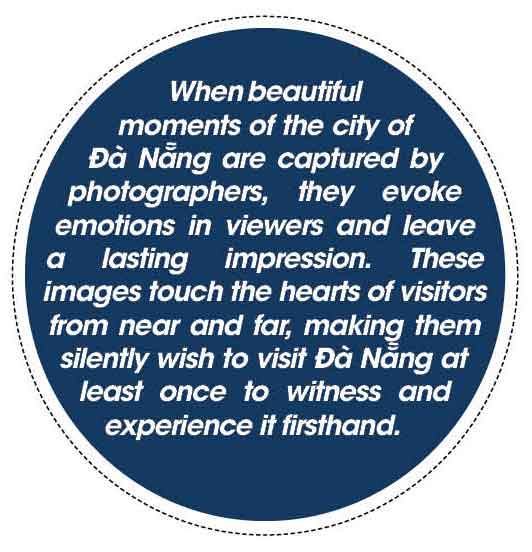 |
It could be the friendly smiles of street vendors, the gentle eyes of Buddhist followers at the annual Quan The Am (Avalokiteśvara) Festival, the radiant faces of tourists at the Da Nang International Fireworks Festival, or the mischievous faces of monkeys, red-shanked douc langurs on the Son Tra Peninsula, and hundreds of other beautiful photos of cherry blossoms and a wide range of flowers sparkling in the early morning sun or as dusk falls behind the mountain peaks. Those images touch the hearts of visitors, making them secretly wish to visit Da Nang once to experience it for themselves.
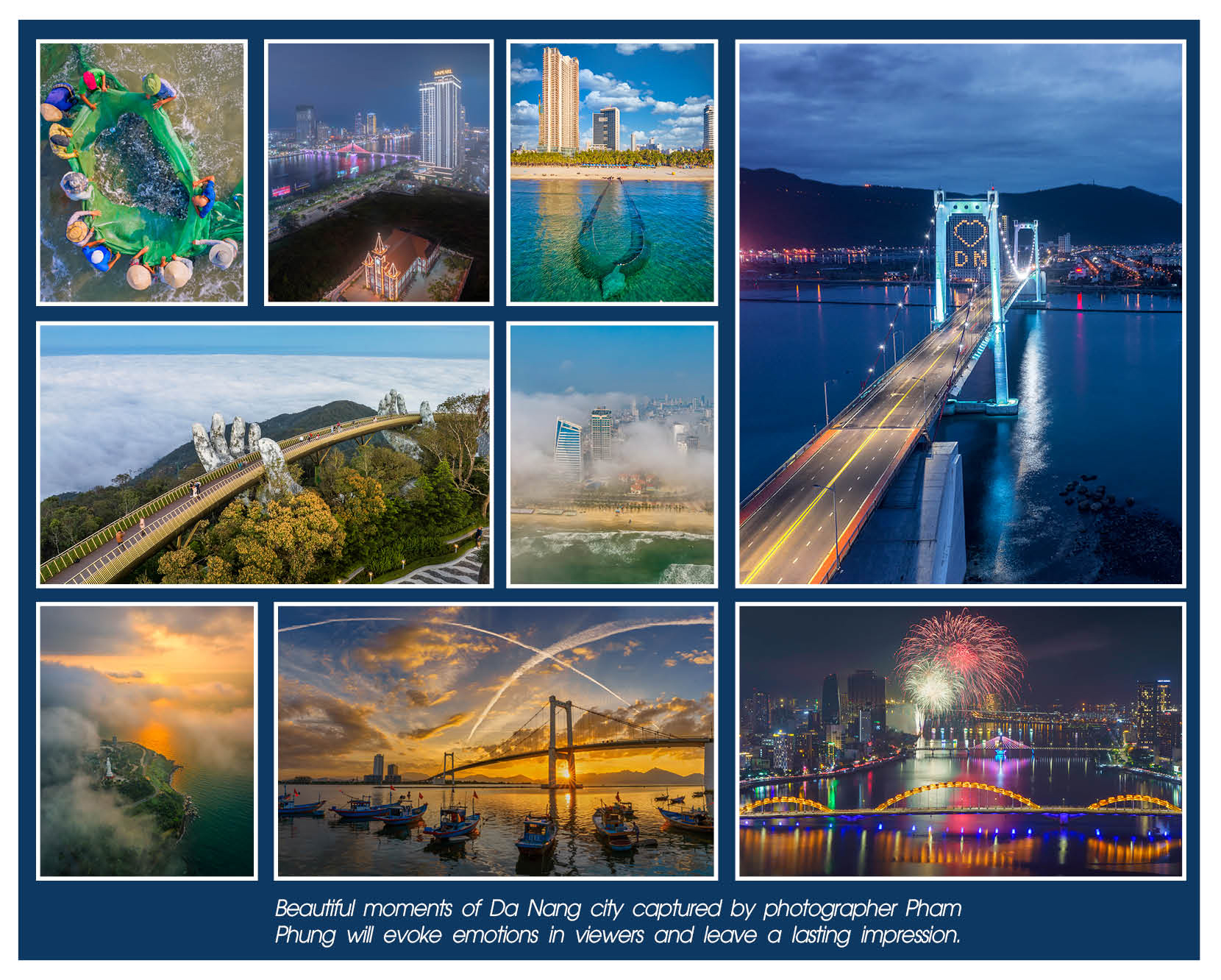 |
Reporting TIEU YEN, LAM VIEN, DOAN HAO LUONG, LE THANH, MAI TRANG
Translating by ANH THU


